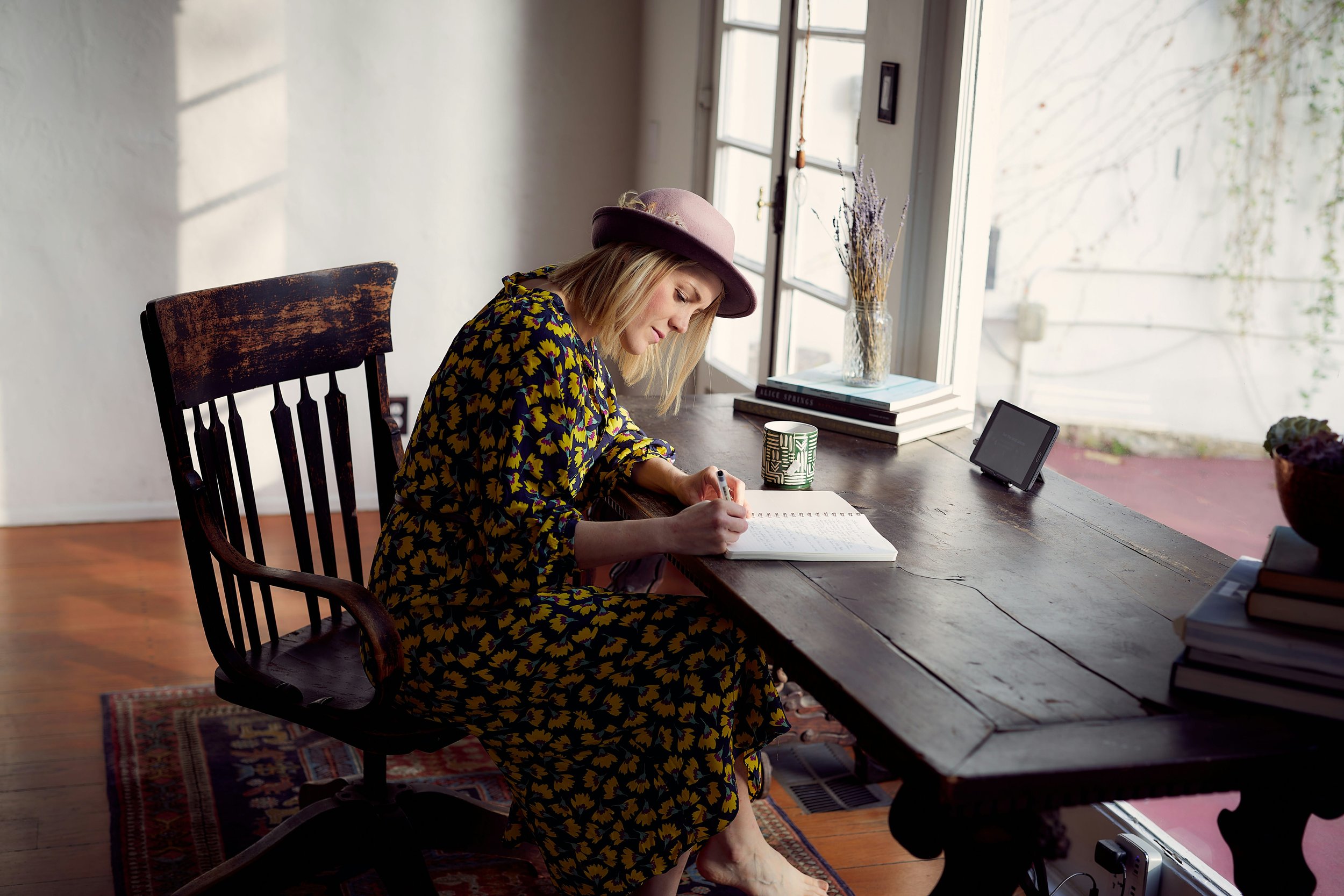Creative Hopelessness: Why Letting Go of Control Is the Key to Beating Burnout
Discover how the ACT concept of creative hopelessness can help you let go of burnout-fueled control strategies and reconnect with a life that matters.
Download the free Cost of Avoidance Worksheet below
You’ve watched the influencers. Tried the routines. Bought the planners. Downloaded the apps. But still, the overwhelm lingers. If anything, the more you try to “fix” your stress, the worse it feels. What if the key to relief isn’t doing more—but letting go of the idea that you just haven’t found the right strategy yet—like if only you could figure out the perfect method? But the truth is, the human mind is wired to overestimate our ability to control internal states. No matter how many strategies you try, you can’t fully tame your thoughts or silence the mental noise—because it’s an illusion of control. Recognizing this is what creative hopelessness is all about.
In this post, we’ll explore one of the most liberating concepts in ACT: creative hopelessness. It sounds heavy, but it’s not about giving up. It’s about letting go of what doesn’t work—and finally creating space for what does.
What is Creative Hopelessness?
Creative hopelessness is the process of recognizing that our go-to strategies for controlling thoughts, emotions, or discomfort often don’t work in the long term—and that continuing to rely on them only deepens the struggle.
Examples of Control Strategies That Backfire
Overworking to outrun feelings of not being enough—and I’m not just talking about your career. I’m talking to the ones scrubbing toilets before guests casually drop in. The ones chasing fitness goals like it’s a full-time job. And moms. Just…all moms. Period.
Looking for reassurance like it’s oxygen—texting friends, rereading messages, Googling symptoms at 1 a.m. just to feel okay for five minutes.
Making spreadsheets for your spreadsheets, mentally rehearsing every possible outcome—because winging it? Not an option when your brain is trying to out-plan life.
Dodging hard conversations like it’s a sport—smiling, nodding, people-pleasing your way through resentment just to keep the peace.
These strategies might offer temporary relief, but over time, they trap us in a loop: we’re exhausted, discouraged, and disconnected from the life we actually want.
Why It’s a “Creative” Kind of Hopelessness
Because it’s not about despair—it’s about possibility. It’s the moment you honestly recognize that your go-to strategies—avoiding feelings, overthinking, over-planning, or numbing—haven’t worked and won’t long-term. It’s not giving up—it’s the spark to get curious about new, values-aligned ways to live.
"When we drop the struggle to control what we cannot, we free up energy to connect with what matters most."
The Illusion of Control: A Quick Exercise in Creative Hopelessness
In the physical world, control works beautifully. If you see a snake on a trail, you move away—problem solved. Our ability to shape our environment is one of the greatest strengths of the human mind. We invent, plan, build, and avoid danger effectively.
But when it comes to the internal world—our thoughts, feelings, memories, and emotions—control isn’t so simple.
Try this classic thought experiment:
Don’t think of a pink elephant.
Just for a moment. Don’t think about it.
What happened? Even if just for a split second, a pink elephant likely popped into your mind.
Now try this:
Pick an object near you—your coffee mug, a pen, anything.
Set a timer for 2 minutes.
Your only task: Stare at the object and don’t think. Especially not about the object itself.
If your mind wandered, generated thoughts, or fixated on the object despite your efforts—that’s not a failure. That’s proof of something important:
Control strategies don’t work the same in the internal world as they do in the external one.
This is the essence of creative hopelessness. It's not about giving up—it's about giving up on the strategies that don’t work, and opening the door to something new: acceptance, defusion, and values-based action.
So...What Do We Do About It?
At this point, you might be thinking, “Okay, I get it. Now give me the strategy. Just tell me what to do, and I’ll do it.”
Totally fair. Most of us are wired to solve problems—and fast. But here’s the thing: If you're feeling stuck, overwhelmed, burned out, or disconnected…there’s a good chance you’ve already tried a dozen strategies to control those feelings.
And if you're still here searching, it might be because those strategies haven’t worked long-term.
Here’s the spoiler: ACT (Acceptance and Commitment Therapy) isn’t a one-size-fits-all solution. It’s a process-based approach, and the goal is psychological flexibility—learning how to respond with awareness, openness, and alignment with what really matters to you.
It’s not linear. It’s not quick-fix. And it’s definitely not about getting your “mind under control.” So take a breath. Slow down. One step at a time.
Let’s start with self-awareness.
Get honest about your go-to control strategies—the things you do to escape or suppress discomfort. They might feel helpful short-term, but over time they often feed the cycle of stress and avoidance.
Here’s a simple, powerful way to explore this:
Cost of Avoidance Worksheet
Download the free Cost of Avoidance Worksheet below
You can use it any way that works for you: follow it step by step, or just let the prompts guide some honest reflection in your journal. The goal isn’t to get it perfect—it’s to get real.
And if you’re ready to stop navigating this alone—if you’re looking to unpack a pattern or get support applying these tools in real life—I’d love to help.
Schedule a free consultation to see if 1:1 ACT-based behavior support is the right next step for you.
The Actualize Wellness Cost of Avoidance Worksheet was adapted from Dr. Russ Harris, author of The Happiness Trap. If you’re looking for more, check out additional free worksheets at TheHappinessTrap.com.


